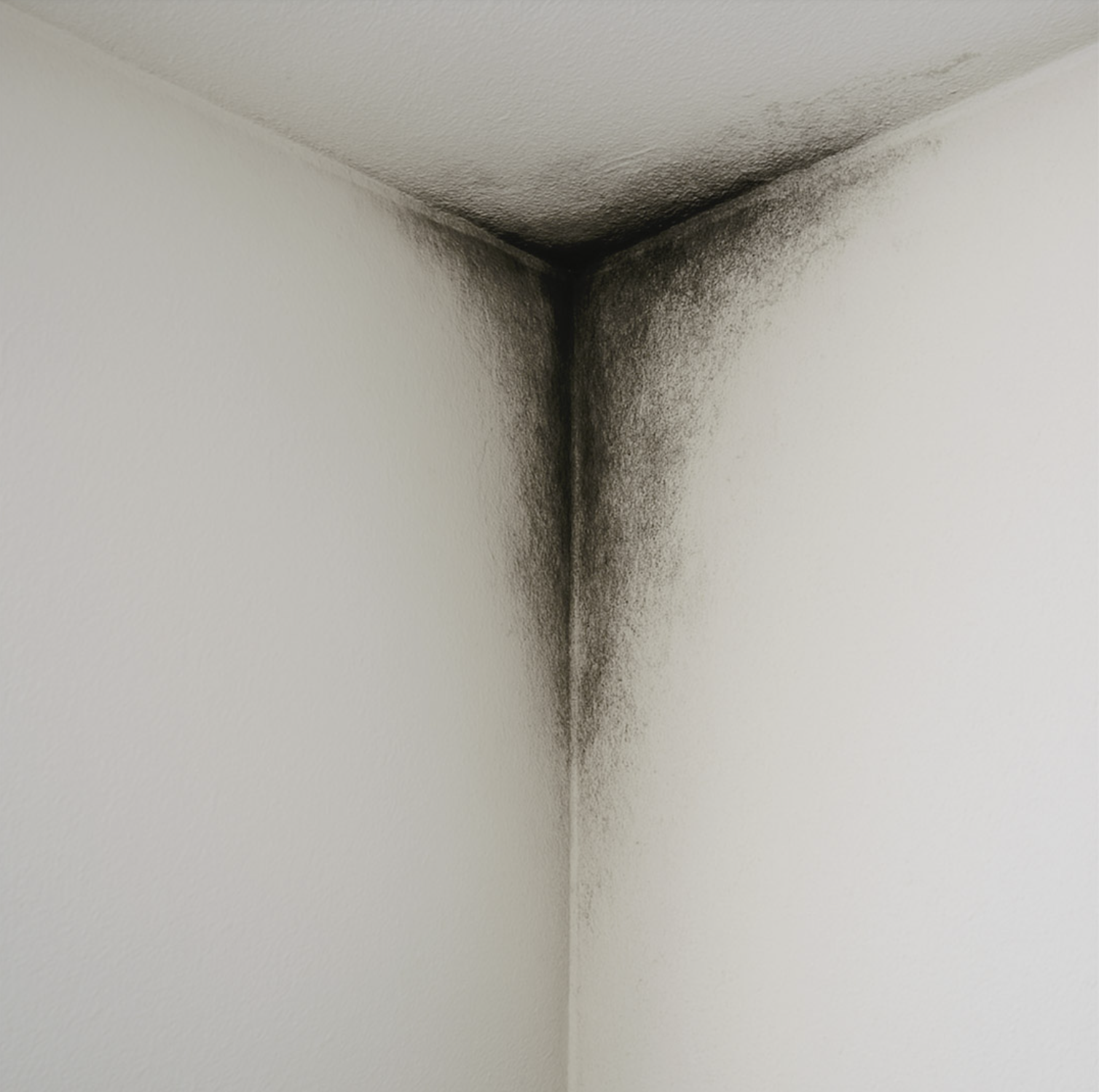Next, you need to tackle the stains. A mixture of warm water and white vinegar can work wonders. For tougher mold, a little hydrogen peroxide can also be effective. But be careful: avoid using vinegar on natural stone or marble surfaces, as it could damage them.
Remember to move furniture away from the wall, even just a few inches, to let air circulate. You’ll see, it makes all the difference.
And if the air remains heavy or humid despite everything, consider installing a moisture absorber or a small electric dehumidifier. It can make all the difference, especially in small spaces.
Bonus tip: In winter, open the windows for just a few minutes in the morning and evening. This is enough to clear the condensation that builds up overnight.
And to combine business with pleasure, you can add a few drops of tea tree essential oil to your cleaning water. In addition to its fresh scent, it is known for its antifungal properties.
How can we prevent it from coming back? (Because we don’t want to do it every month)
Once the walls are cleaned, the most important thing is prevention. Ideally, you want to address the problem at its root.
If your ventilation system isn’t adequate, consider installing a mechanical ventilation system or at least improving the air extraction. Good ventilation works wonders.
Also keep an eye on the humidity level in your home. A small hygrometer costs next to nothing, and you’ll quickly know if the air is too humid. The right range? Between 40 and 60%.
If your walls are prone to moisture, you can also apply a specific anti-humidity paint. It doesn’t do everything, but it provides a welcome layer of protection.
And if you have any doubts about a leak or an insulation problem, it’s best to call a professional. A craftsman or a humidity expert will be able to provide a proper diagnosis. Sometimes, what you see on the wall is just the tip of the iceberg.
Absolutely avoid: painting directly over a mold stain, hoping that it will “hide the problem.” It’s a cover-up, and it will come back sooner or later. The same goes for gas space heaters without proper ventilation: they release water vapor, which only makes the situation worse.
What if the spots come back despite everything?
If the marks reappear despite your best efforts, there is a deeper problem.
In this case, you need to check the condition of the roof, exterior walls, and gutters. Poor insulation or leaks invisible to the naked eye could be the cause.
There are treatments available for rising damp: the most common is injecting resin into the walls to block moisture from the ground. You can also consider anti-saltpeter treatment if the walls begin to crumble or turn white.
Here again, calling on an RGE tradesperson or a humidity expert can really save you from higher costs in the long run. A complete diagnosis allows you to target the real cause and implement the right solutions.
And if you’re renting, don’t wait to notify your landlord. Mold can be a real health problem, and it’s important to take care of things quickly.
Now you’re ready to tackle the dark corners of your walls. With a little vigilance and the right actions, you can say goodbye to stubborn dampness… and breathe easier in your home.
